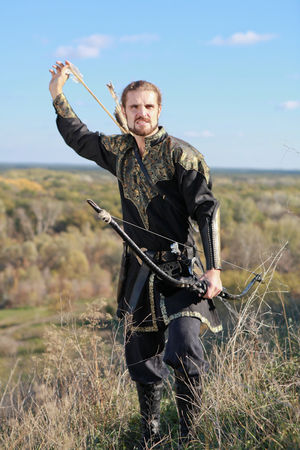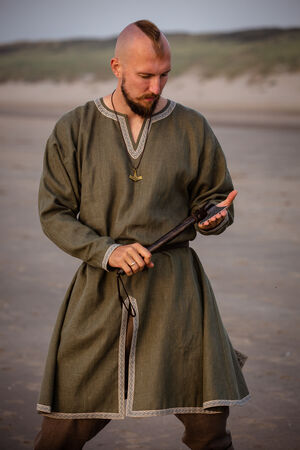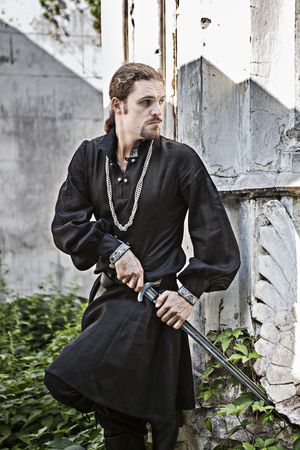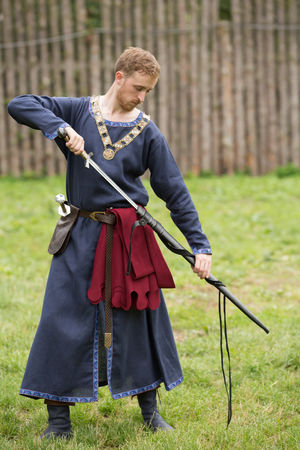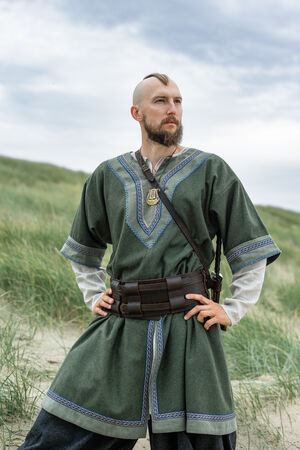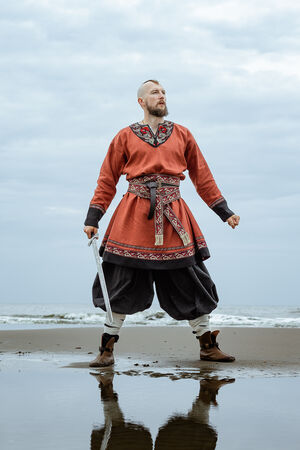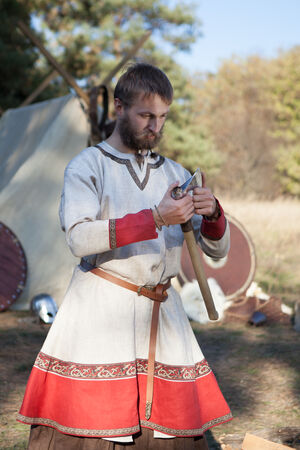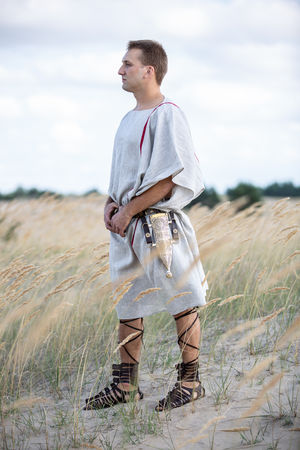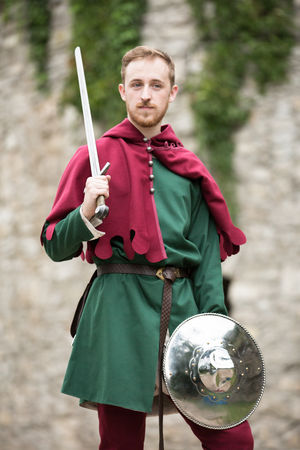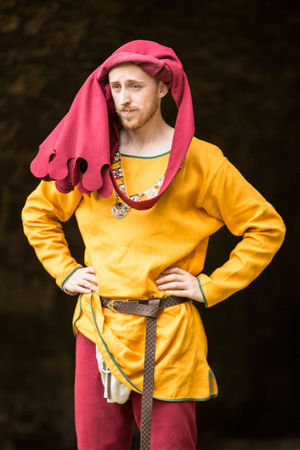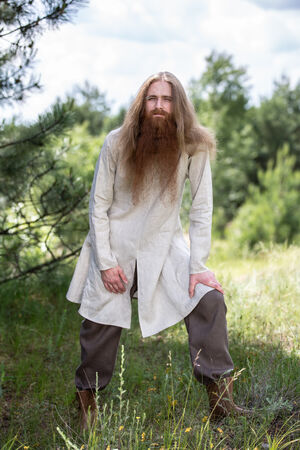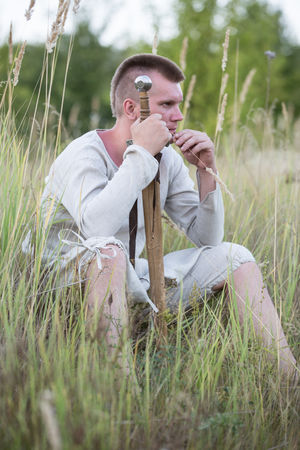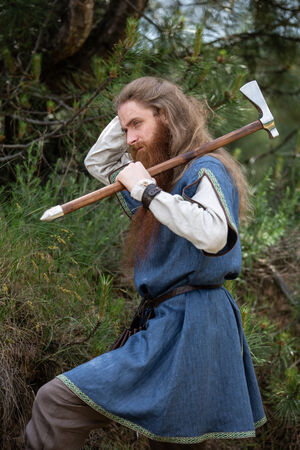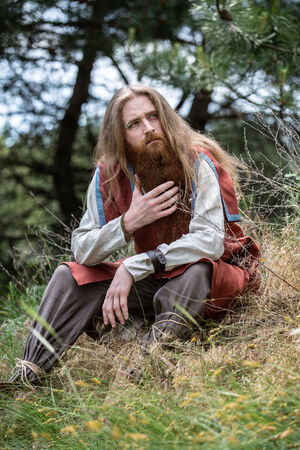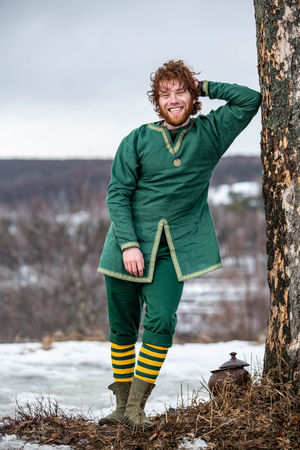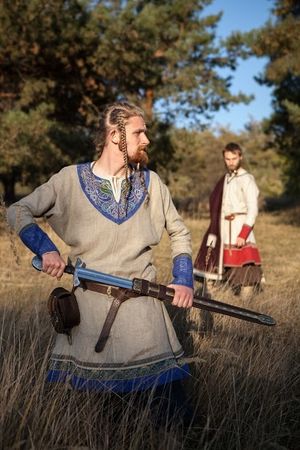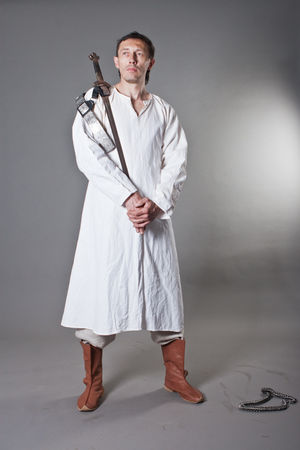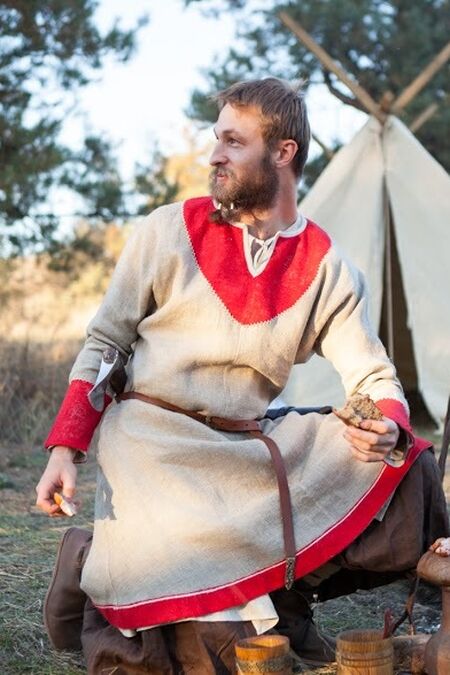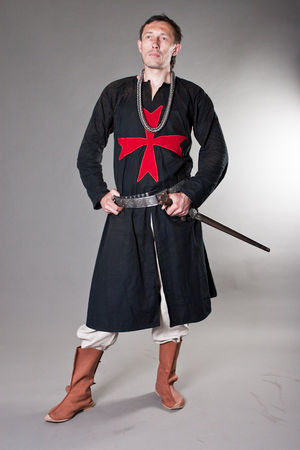Medieval, Viking Tunics for Men
Medieval tunics, Viking tunics, Roman tunics and more
What tunics does ArmStreet offer?
Medieval tunic and costumes as well as Viking tunics were among the very first items ArmStreet offered for sale back in the years. Since then our selection of tunics has grown essentially, and we offer a huge range of tunics made of natural materials such as linen, wool, cotton, and their blends, with or without trim and based on different period designs. To make it simple for you, here is a full list:
- Men's Medieval Tunics (XIII to XV century)
- Viking Tunics based on various designs
- Roman Tunics
- Simple linen undertunics
- Eastern Europe tunics and shirt
- Fantasy tunics for LARP and Renaissance Fair
What are the differences between tunics?
Let's go through the main design options to make it easier for you
Medieval Tunics
We offer an enormous selection of Middle Age tunics, mostly from the XIII to XV centuries, including noble knights and warriors tunics and simpler options for different classes. Traditionally, we do not compromise on quality, use the best organic materials available, and design our trims and accents to make the look of your tunic absolutely special, whether you're going to an SCA event or a Renaissance Fair or LARP
Viking Tunic for Men
The Viking tunic is one of the most recognizable Viking costume pieces, known for its simplicity and being the origin of many later designs. We offer a great selection of linen, woolen, and cotton Viking tunics, for Noble Viking warriors and simple farmers. Our most popular Male Viking tunics are based on historical patterns with some alterations, we designed many Viking trims based on different Viking Art styles and decorated our most exclusive tunics with handmade embroidery and stitching. Practically, ArmStreet is a one-stop shop for Viking enthusiasts, offering amazing Viking clothing for all types of costume events, reenactors and even Viking cosplay
Roman tunic
The Roman tunic is known for its simplicity and style, and the one we offer in our store is made with love for Roman culture and style and
Fantasy and LARP tunics for men
Many ArmStreet customers pay a little bit less attention to the historical authenticity and style but need some more practical costume options for the LARP events, cosplay or Renaissance Fairs. We offer a great choice for these needs, offering simple but authentically looking men's tunics with short sleeves to make your life easier in summer.
What is undertunic?
Throughout history, any piece of costume was very valuable, especially when it was made of high-quality expensive fabric. So, the Noble class of the Middle Ages society used to wear undertunics to protect their expensive clothing from sweat. Also, simple linen tunics were used as underwear or a basic layer of clothing in hot weather.
Medieval tunics for men throughout history
Long before the Common era, with the rise of weaving about 7 thousand years ago, ancient Egyptians wore linen garments reminiscent of a tunic, but its golden age dawned at the flowering of the Roman Empire when this singular item of apparel was able to define and represent status, wealth and fashion norms. That was the time woolen tunics of melee origin became widespread. After the fall of the great empire, the tunic was chosen and adopted as the basis of male and military vestments by its successor, the Byzantine.
Despite the enormous cultural and civilizational differences, male garments of the Gauls, Franks, Anglo-Saxons, and Vikings centered around men's tunics as well. Adapted to living in severe nature and cold climates, these people were inclined to wear two tunics at a time. Under tunic played the role of underwear, while the upper one was dyed in bright colors and decorated in every possible way as a powerful symbol of wealth and class distinction.
Shirt-like men's medieval tunic served as the basis for both everyday and elegant dressing and became ubiquitous in the Early Middle Ages fashion. Stitched from two cloths, it was devoid of collars, covered both shoulders, and had long or 3/4 sleeves, reaching the middle of the forearm. Long tunics were worn girdled with leather, textile, and woven belts, and the military tunics tended to be shorter than the civil ones. The pure white color of the cloth fulfilled masculine ideals of resolute austerity and only a person of substantial prosperity could afford to have their shirts washed frequently and to own enough of them to wear.
The history underlying this garment throughout the High Middle Ages is rich and, in the main part, untold. The tunic's bottom was gradually elongated in the attempts of the church to hide the human body. Medieval knights wore linen tunics for men under their armors, using them as underwear. Royals and the upper class wore them made of delicate fine fabrics, silk was considered especially elegant. The abundance of material emphasized the owner's prosperity and the Gothic fashion hid the tunics under the layers of draping outerwear. White undershirt regained its association with intimacy and exposure, and ever since the only place where one could see a man wearing it separately was a public execution on the scaffold.



